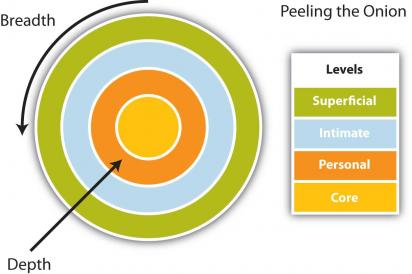Being a Boss Versus Being a Leader
Workplace relationships are strongly influenced by the leadership of a company or business. If you find yourself in leadership in the workplace, this blog is for you.

This image is an introductory illustration of the difference between bosses and leaders. Their effect on their employees is clear. A boss orders and separates from employees while a leader stands behind and works with employees.
Interpersonal communication comes in many forms and is effected by each individual’s perception, self-awareness, and emotional intelligence among many other topics. Needless to say, interpersonal communication is complex. However, every individual comes into contact with interpersonal interaction each day. Specifically in the workplace, there are many contexts under which interpersonal communication takes place. Professional, friendship, and possibly even romantic relationships are built. The leadership of a company or business sets the tone for these relationships in their formation and continuation.
Maturing leadership skills makes it possible for a boss to become a leader. Characteristics of a boss and a leader are described well in this blog- Leader vs. Boss. Leaders initiate and encourage growth. They help people to see potential in themselves and pair with employees and coworkers on projects. Bosses gives orders and criticisms, and they demand respect without earning it. The importance of this distinction seems subtle at first, but it is crucial concerning interpersonal communication in the workplace. Simple verbal implications such as telling someone to go do something versus joining with them is the beginning of making the shift from being a boss to being a leader. Leadership is simply more effective. Positive workplace relationships are dependent on positive leadership. Erika Andersen has studied this topic and gives more detail on this topic in this written work.
The personal application for this setting is not dependent on formal leadership roles. Every individual can effect the positive or negative nature of a work environment. My first suggestion would be to begin to check the language you use when speaking with coworkers or employees. Change you I to we. Begin to work with those people rather than instructing them on what to do. Second, look for the strengths in your coworkers or employees. Encourage those strengths and work with them. Base the context in which you encourage on the strengths of the individual and limit criticism to constructive conversations that are for the benefit of the employee and the company alike. Finally, leaders exercise their human nature in interpersonal interactions. Shying away from kindness and compassion are not beneficial to the company or to relationships. Allow an appropriate level of self-disclosure to take place between yourself and your employees. Leaders are as human as any other employee.
Personally, I have come to understand the importance of maturing my leadership skills in order to encourage growth in others. I am the president of a campus chapter of the International Justice Mission on my college campus. We have just become an official campus chapter this school year. Being a new chapter has come with many challenges. The most challenging for me was balancing the delegation of tasks while remaining a leader rather than a boss. The most effective events that we have planned have been a result of team work within the leadership team that resulted from a joint effort between a group of leaders. Using the “let’s go” versus the “go” language and inserting “we” where “I” would have previous said I have been the most basic changes. I also have made a conscious effort to learn the strengths of the members of the leadership team and to encourage those in the task that I delegate to each person. The level of self-disclosure that I initially utilized was too task focused for the group. I have begun to spend more time getting to know each of the leaders and sharing about my life.
Learning about leadership is an investment that is applicable to any workplace. Improving leadership skills is a worthwhile endeavor. Now is the time to begin!
References
Expert Business Analyst. (2013, July). Retrieved May 1, 2016, from http://expertbusinessanalyst.com/wp-content/uploads/2013/07/leader-vs-boss.jpg
Andersen, E. (2012, December 9). Great Workplaces Arise from Great Leaders. Retrieved May 01, 2016, from http://www.forbes.com/sites/erikaandersen/2012/09/12/great-workplaces-arise-from-great-leaders/#7d5ead14d424
Jimenez, C. (2013, January 16). Leader vs. Boss: What’s the Difference? Retrieved May 01, 2016, from http://blogs.wpcarey.asu.edu/undergrad/leader-vs-boss-whats-the-difference/


